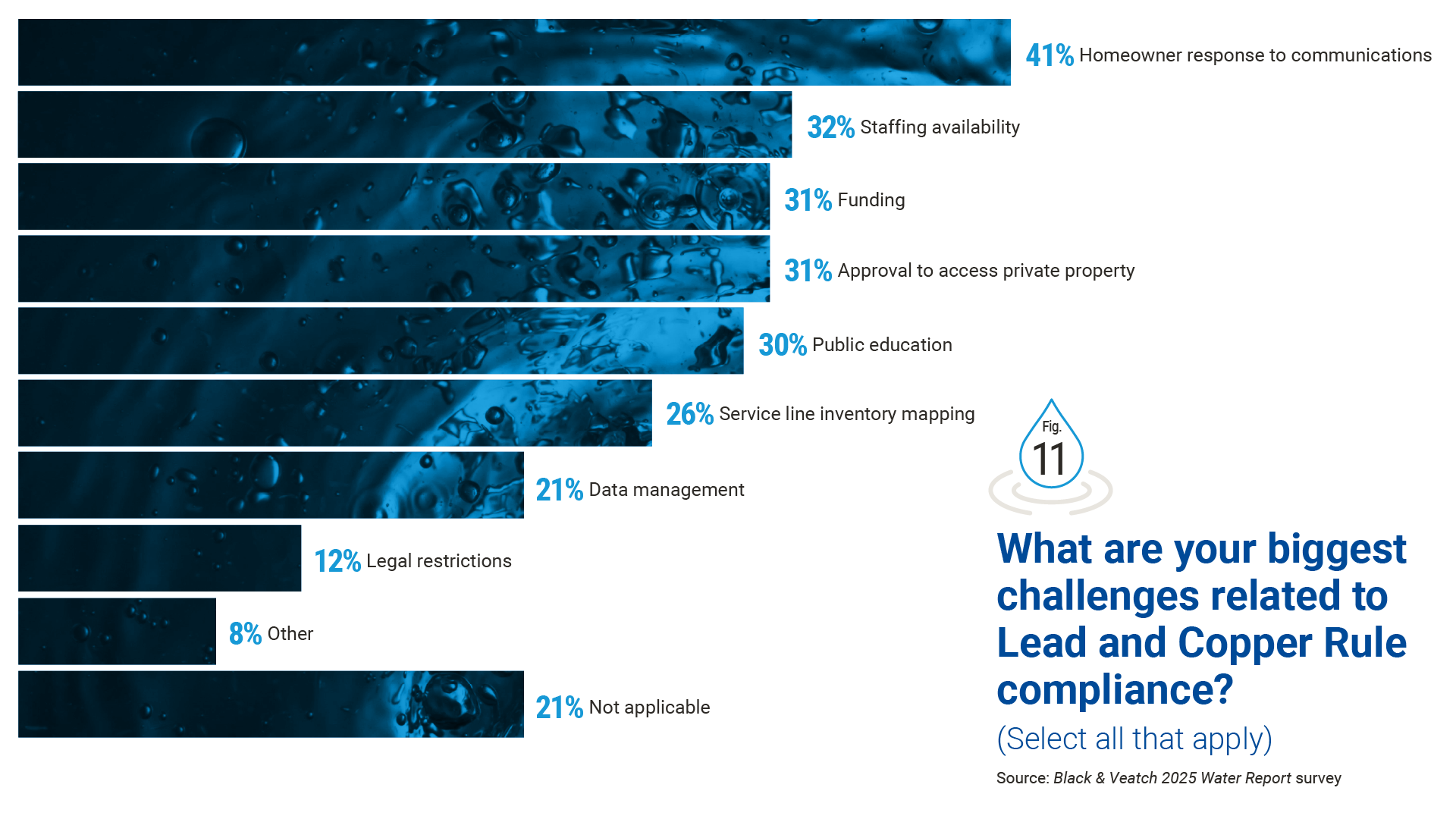Could this decrease in capacity and supply reflect a lack of optimism from a few years ago or is it an indication of a growing interest in water supply that now surpasses projected system capacity? As the country grapples with the proliferation of data centers across the United States (a topic discussed at length elsewhere in this report), the spotlight shines a light on the sizable amounts of water those businesses demand for cooling where peak demand generally occurs during summer. Utilities are working to understand their capabilities, regardless of whether they are truly located in a water-rich area.
One way to get a read on all of it is with a “One Water” — or holistic, integrated approach to water management — lens, which focuses on all sources of supply types that a location may have, including such resources as surface water or potable water. From there, the utility assesses its demands, its uses for water and anything else that can be added to the water matrix such as stormwater, desalination and water reuse.
This type of planning and implementation is a holistic approach to a water supply problem that persists among utilities, and it ultimately could provide necessary planning for the days when water supply is extremely limited — begging the question of why more are not implementing this approach, as the survey for this report bears out.
When asked if they’ve developed a One Water/integrated water supply plan, only 28% answered affirmatively. More than one-third (35%) said they didn’t know, 15% said “no but they need to do this in the future,” and 22% said “no, and they don’t see a need to do it.”
While the future of sustainability remains uncertain, utilities remain steadfast in their commitments to their communities, ensuring resiliency in the face of flooding, water supply issues and the litany of other headwinds the water sector admirably continues to weather.








